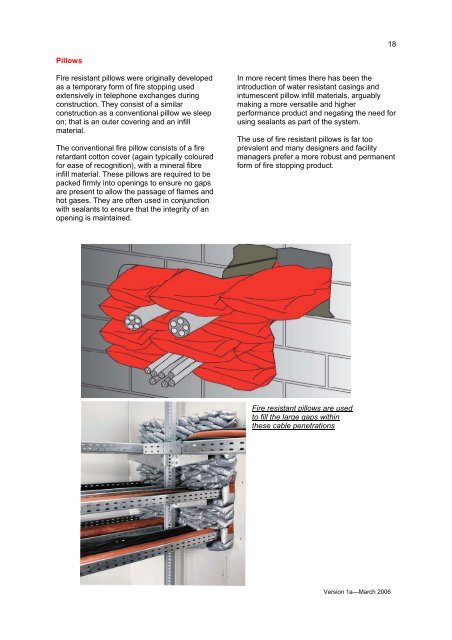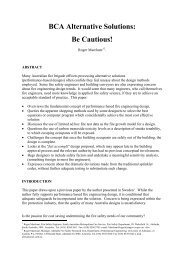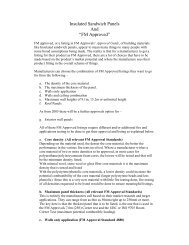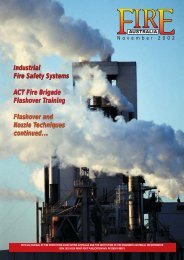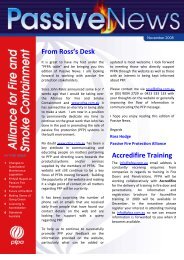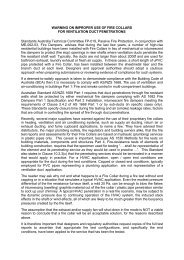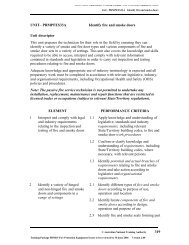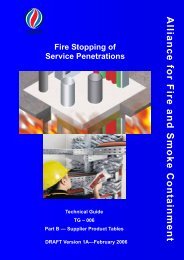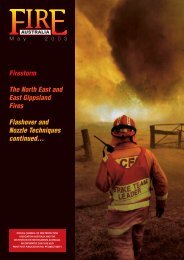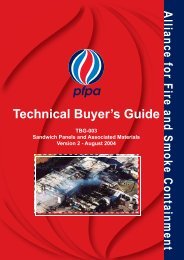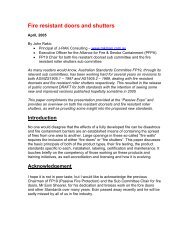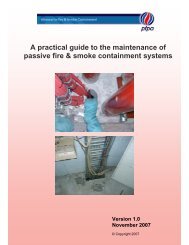Containment
TG - Fire Stopping - Part A.pub - PFPA
TG - Fire Stopping - Part A.pub - PFPA
- No tags were found...
You also want an ePaper? Increase the reach of your titles
YUMPU automatically turns print PDFs into web optimized ePapers that Google loves.
18<br />
Pillows<br />
Fire resistant pillows were originally developed<br />
as a temporary form of fire stopping used<br />
extensively in telephone exchanges during<br />
construction. They consist of a similar<br />
construction as a conventional pillow we sleep<br />
on; that is an outer covering and an infill<br />
material.<br />
The conventional fire pillow consists of a fire<br />
retardant cotton cover (again typically coloured<br />
for ease of recognition), with a mineral fibre<br />
infill material. These pillows are required to be<br />
packed firmly into openings to ensure no gaps<br />
are present to allow the passage of flames and<br />
hot gases. They are often used in conjunction<br />
with sealants to ensure that the integrity of an<br />
opening is maintained.<br />
In more recent times there has been the<br />
introduction of water resistant casings and<br />
intumescent pillow infill materials, arguably<br />
making a more versatile and higher<br />
performance product and negating the need for<br />
using sealants as part of the system.<br />
The use of fire resistant pillows is far too<br />
prevalent and many designers and facility<br />
managers prefer a more robust and permanent<br />
form of fire stopping product.<br />
Fire resistant pillows are used<br />
to fill the large gaps within<br />
these cable penetrations<br />
Version 1a—March 2006


